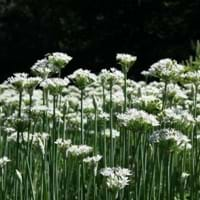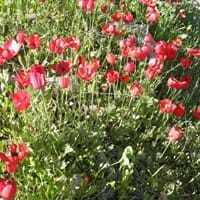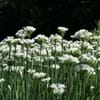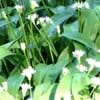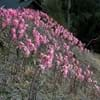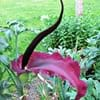Life Span
Perennial
Perennial
Type
Herbs
Bulb or Corm or Tuber
Origin
Southern Asia, China
Southern Europe, Mediterranean
Types
garlic chives, oriental garlic, Asian chives,
Not Available
Number of Varieties
Not Available
Habitat
Cultivated Beds
damp meadows, Dry areas, Woodland edges
USDA Hardiness Zone
4-9
8-12
AHS Heat Zone
Not Available
12-3
Sunset Zone
H1, H2, 1a, 1b, 2a, 2b, 3a, 3b, 4, 5, 6, 7, 8, 9, 10, 11, 12, 13, 14, 15, 16, 17, 18, 19, 20, 21, 22, 23, 24
21,22
Habit
Clump-Forming
Upright/Erect
Flower Color
White
White, Red, Blue, Pink
Flower Color Modifier
Bicolor
Bicolor
Fruit Color
Tan, Black
Not Available
Leaf Color in Spring
Green
Green
Leaf Color in Summer
Green
Light Green
Leaf Color in Fall
Green, Yellow green
Several shades of Green
Leaf Color in Winter
Light Green
Light Green
Leaf Shape
Needle like
Lobed
Plant Season
Summer, Fall
Spring, Winter
Sunlight
Full Sun, Partial Sun
Full Sun, Partial Sun, Partial shade
Type of Soil
Loam, Sand
Loam, Sand
The pH of Soil
Neutral
Acidic, Neutral, Alkaline
Soil Drainage
Well drained
Well drained
Bloom Time
Late Summer, Early Fall
Early Spring, Spring, Late Winter, Indeterminate
Tolerances
Drought
Drought
Where to Plant?
Container, Ground
Ground, Pot
How to Plant?
Seedlings
Seedlings, Tuber propagation
Plant Maintenance
Medium
Medium
Watering Requirements
Average Water Needs
Medium
In Summer
Lots of watering
Lots of watering
In Spring
Moderate
Moderate
In Winter
Average Water
Average Water
Soil pH
Neutral
Acidic, Neutral, Alkaline
Soil Type
Loam, Sand
Loam, Sand
Soil Drainage Capacity
Well drained
Well drained
Sun Exposure
Full Sun, Partial Sun
Full Sun, Partial Sun, Partial shade
Pruning
Remove damaged leaves, Remove dead branches, Remove dead leaves
Remove damaged leaves, Remove dead branches, Remove dead leaves
Fertilizers
All-Purpose Liquid Fertilizer
All-Purpose Liquid Fertilizer
Pests and Diseases
Red blotch
Cutworms
Plant Tolerance
Drought
Drought
Flower Petal Number
Single
Single, Double, Semi-Double
Fragrant Bark/Stem
Yes
No
Foliage Texture
Medium
Fine
Foliage Sheen
Matte
Matte
Attracts
Bees, Flies
Butterflies, Hummingbirds, pollinators
Allergy
Not Available
Not Available
Aesthetic Uses
Not Available
Borders, Cottage Garden
Beauty Benefits
Not Available
Not Available
Environmental Uses
Air purification
Air purification
Medicinal Uses
Antibacterial, Cardiac, Digestive
Antitumor, Cramps
Part of Plant Used
Flowers, Leaves, Root
Flowers, Leaves
Other Uses
Used as a moth repellent
Unknown
Used As Indoor Plant
No
No
Used As Outdoor Plant
Yes
Yes
Garden Design
Container, Edible, Herb / Vegetable, Mixed Border, Rock Garden / Wall
Bedding Plant, Container, Cutflower, Mixed Border, Rock Garden / Wall
Botanical Name
ALLIUM tuberosum
ANEMONE coronaria
Common Name
Chinese Chives
Crown Windflower, Lilies-of-the-Field, Poppy-flowered Anemone, wind flower
In Hindi
Chinese Chives
Poppy Flowered Anemone
In German
Knoblauch-Schnittlauch
Kronen-Anemone
In French
Ciboule de Chine
Anémone couronnée
In Spanish
Allium tuberosum
Poppy flowered Anemone
In Greek
Chinese Chives
Poppy Flowered Anemone
In Portuguese
Allium tuberosum
Poppy Flowered Anemone
In Polish
Chinese Chives
Zawilec wieńcowy
In Latin
Chinese Chives
Poppy Flowered Anemone
Phylum
Tracheophyta
Anthophyta
Class
Magnoliopsida
Equisetopsida
Order
Asparagales
Ranunculales
Family
Liliaceae
Ranunculaceae
Clade
Angiosperms, Monocots
Angiosperms, Eudicots
Tribe
Not Available
Not Available
Subfamily
Not Available
Not Available
Difference Between Chinese Chives and Poppy Flowered Anemone
If you are confused whether Chinese Chives or Poppy Flowered Anemone are same, here are some features about those plants to help you choose better. Many people think that these two plants have the same characteristics, but one can see Chinese Chives and Poppy Flowered Anemone Information and learn more about it. Fertilizers required for proper growth of Chinese Chives are All-Purpose Liquid Fertilizer, whereas for Poppy Flowered Anemone fertilizers required are All-Purpose Liquid Fertilizer. Hence, one should know the basic difference between Chinese Chives and Poppy Flowered Anemone if you are planning to have them in your garden to enhance its beauty.
<
Flowering PlantsImportance of Chinese Chives and Poppy Flowered Anemone
Want to have the most appropriate plant for your garden? You might want to know the importance of Chinese Chives and Poppy Flowered Anemone. Basically, these two plants vary in many aspects. Compare Chinese Chives and Poppy Flowered Anemone as they differ in many characteristics such as their life, care, benefits, facts, etc. Every gardener must at least have the slightest clue about the plants he wants to plant in his garden. Compare their benefits, which differ in many ways like facts and uses. The medicinal use of Chinese Chives is Antibacterial, Cardiac and Digestive whereas of Poppy Flowered Anemone is Antitumor and Cramps. Chinese Chives has beauty benefits as follows: Not Available while Poppy Flowered Anemone has beauty benefits as follows: Not Available.
Compare Facts of Chinese Chives vs Poppy Flowered Anemone
How to choose the best garden plant for your garden depending upon its facts? Here garden plant comparison will help you to solve this query. Compare the facts of Chinese Chives vs Poppy Flowered Anemone and know which one to choose. As garden plants have benefits and other uses, allergy is also a major drawback of plants for some people. Allergic reactions of Chinese Chives are Not Available whereas of Poppy Flowered Anemone have Not Available respectively. Having a fruit bearing plant in your garden can be a plus point of your garden. Chinese Chives has no showy fruits and Poppy Flowered Anemone has no showy fruits. Also Chinese Chives is not flowering and Poppy Flowered Anemone is not flowering . You can compare Chinese Chives and Poppy Flowered Anemone facts and facts of other plants too.
